A collaborative rehabilitation framework involving the dual-discipline support of physiotherapy and strength & conditioning. To assist the athlete in their journey from injury to performance.
Keywords: Reflective practice, rehabilitation framework, professional development
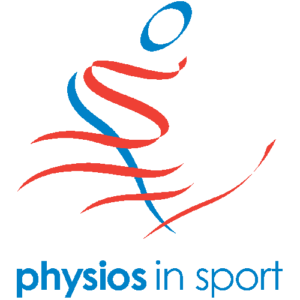
Introduction:
The final part of this blog series follows on from the principles established in part one, two and three. This blog’s focus is on the ‘monitoring and reviewing phase’ of rehabilitation (see Figure 1), specifically in the context of dual-disciplinary collaboration between strength and conditioning (S&C) and physiotherapy practitioners. Part four also highlights how the principles in this blog series transcends across multiple practitioner disciplines and sports/environments, meaning it can be applied to any context.
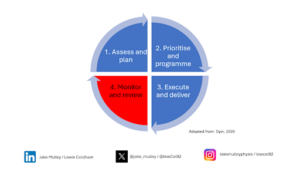
Figure 1: Monitor and review phase of rehabilitation
Monitor and review:
Monitoring progress and reviewing the effectiveness of our interventions as practitioners is an important process to follow throughout rehabilitation. This comes in multiple forms, including clinical assessments, medical imaging, diagnostic testing and physical profiling, as well as subjective feedback (see figure 2):
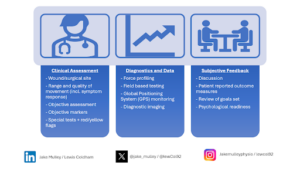
Figure 2: Methods of monitoring
All of these forms of appraisal are vital to the process. In situations whereby quantitative feedback is impacted by environmental, socio-economic and cultural factors, there is still scope to effectively monitor and review rehabilitation programme effectiveness within the particular context. Asking the questions in figure 3 below can help to begin the appraisal and reflection process of a rehabilitation programme:
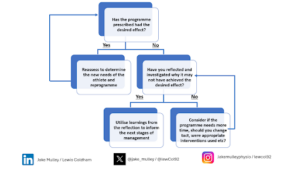
Figure 3: Review process flowchart
Collaboration within the inter-disciplinary team is equally important, and utilising the skills and knowledge base of the team can ensure reflection occurs to drive the rehabilitation forward for the athlete who is at the centre of the process. In the case of a S&C practitioner and physiotherapy practitioner, combining the physiotherapeutic assessment and knowledge of pathophysiology of healing, physical profiling and diagnostics and the athlete’s subjective feedback provides a rounded view of the programme allowing for reflection, discussion and collective agreement on the next steps to return an athlete to health, fitness and performance.
The end result is personal and professional growth for all involved. The athlete will develop physically and psychologically throughout the process. Practitioners will be able to reflect individually on their role within the rehabilitation to improve for future situations and also how to form quality working relationships, effectively communicate and collaborate between each other for the best interests of their health and development.
Collaboration is key:
Collaborative working and effective communication within the inter-disciplinary team can result in improved athlete outcomes (Ekstrand et al., 2018). Clear initial planning between S&C and physiotherapy practitioners around the pathophysiological, environmental, contextual and psychosocial aspects of the rehabilitation, provides direction and lays the foundation for a successful rehabilitation process. It also requires everyone pulling in the same direction, it cannot be done with individual practitioners working in silos. This requires collaborative practice at all rehabilitation stages and beyond the athlete’s return to performance. The process of collaboration, reflection and reviewing as an inter-disciplinary team is a continuous process, not a one-time event as displayed in figure 4.
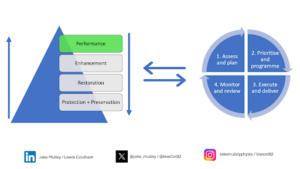
Figure 4: Continuous review process
Conclusion:
- Injury should be seen as an opportunity for athlete and practitioner growth/development.
- S&C and physiotherapy practitioners may benefit from seeking to understand the impact of other disciplines’ skill sets to best support the athlete throughout the injury process.
- Monitoring and reviewing the effectiveness of interventions at all rehabilitation stages collectively allows for reflection and professional growth.
- There is strength in collaboration between the two professions, pulling together their collective specialisms in a structured way for the greater goal of promoting athlete health.
Explore the special edition of BJSM and physios in sports here.
UKSCA annual conference will take place between 13th and 15th September in Nottingham. See further information here.
Acknowledgements:
Thank you to the ACPSEM (@physiosinsport) for supporting this blog.
Competing Interests – None
Jake Mulley BSc (Hons), MCSP, ACPSEM Bronze Accreditation. Senior Physiotherapist and educator working in private practice. LinkedIn: Jake Mulley, Instagram: jakemulleyphysio, X: @jake_mulley
Lewis Coldham BSc (Hons). Strength and Rehabilitation Coach and Educator. LinkedIn: Lew Coldham, Instagram: lewcol92, X: @lewCol92
References:
- Burns, L., Weissensteiner, J.R. and Cohen, M. (2019) ‘Supportive interpersonal relationships: A key component to high-performance sport’, British Journal of Sports Medicine, 53(22), pp. 1386–1389. doi:10.1136/bjsports-2018-100312.
- Dyer, C., 2020. Groin Pain in an International Rugby Sevens Athlete
- Ekstrand, J. et al. (2018) ‘Communication quality between the medical team and the head coach/manager is associated with injury burden and player availability in Elite Football Clubs’, British Journal of Sports Medicine, 53(5), pp. 304–308. doi:10.1136/bjsports-2018-099411.
- Hazlett, A., 2020. Physiotherapy Art vs Science